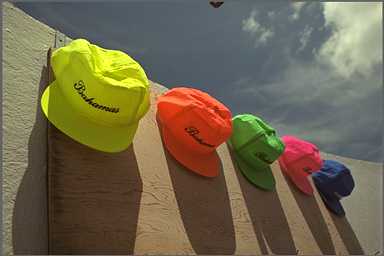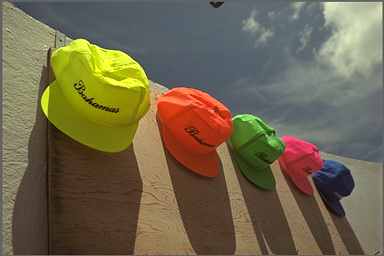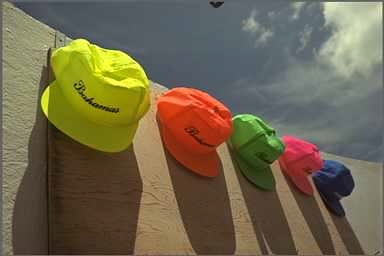
| Previous ... | JQT Home ... | Next ... |
|
|
Filesize Reduction: Sample ImagesIn this section, we show an example of bandwidth reduction using a JQT. A 24-bit color display is necessary to fully appreciate this example: 8-bit displays use color mapping techniques with artifacts of their own, which are not helped by the JQT processing. The image below is compressed using the quantization tables recommended in the JPEG standard. Most commercial and free JPEG encoders use linear scalings of these tables to provide a filesize vs. image quality tradeoff. The image below was compressed using a unity scaling of the tables, achieving a compressed filesize of 9353 bytes. |

|
Sample image, compressed in accordance with JPEG standard recommendations. Note slight artifacts around the lettering, tops, and rims of hats. Compressed filesize: 9353 bytes. Perceptual error: 0.0231 |
|
Note the moderate image quality: the image basically looks OK, but some compression artifacts are noticeable (look at the text on the yellow hat, and the top edges of all of the hats). When measured using our perceptual error metric, which compares the image quality of the uncompressed and compressed images, it receives a score of 0.0231. When our JQT is applied to this test image, it improves the subjective image quality by reducing the compression artifacts. We can take advantage of this performance to reduce the filesize of the initial image, so that this smaller imagefile, processed by the JQT, also scores a value below 0.0231 on our perceptual error metric. We do this by scaling the quantization tables used during the encoding of the image. For this sample image, the filesize is reduced from 9353 bytes to 8473 bytes, a filesize reduction of 9.4 percent. This smaller imagefile is shown below (before JQT processing). Note the artifacts in this image are more severe than the original image above; it has a perceptual error score of 0.0251. |

|
Sample image as above, but with a higher compression rate. File size is reduced to 8473 bytes -- however, artifacts around the lettering, tops, and rims of hats are worse, as perceptual error score increases to 0.0251. |
|
When we apply our JQT to this image, the artifacts are reduced: compare the image below with the others. The perceptual error metric for this image is 0.02308, slightly better than the score of the original image. Note that the filesize of this image has expanded due to JQT processing, from 8203 bytes to 33,543 bytes -- when used in a web proxy server, the high-bandwidth local area network links between the proxy server and the end-user machines can absorb this extra increase. |

|
The image immediately above, after JQT processing. This image has a perceptual error score less than the top image on this page. Note that the artifacts around the lettering, tops, and rims of hats are reduced to the level of the top image. |
|
We measured the average filesize reduction over an independent test set of 132 color images (nominal size 384 by 256) and found an average filesize reduction of 11.5 percent. |
| Previous ... | JQT Home ... | Next ... |
|
|
|
|